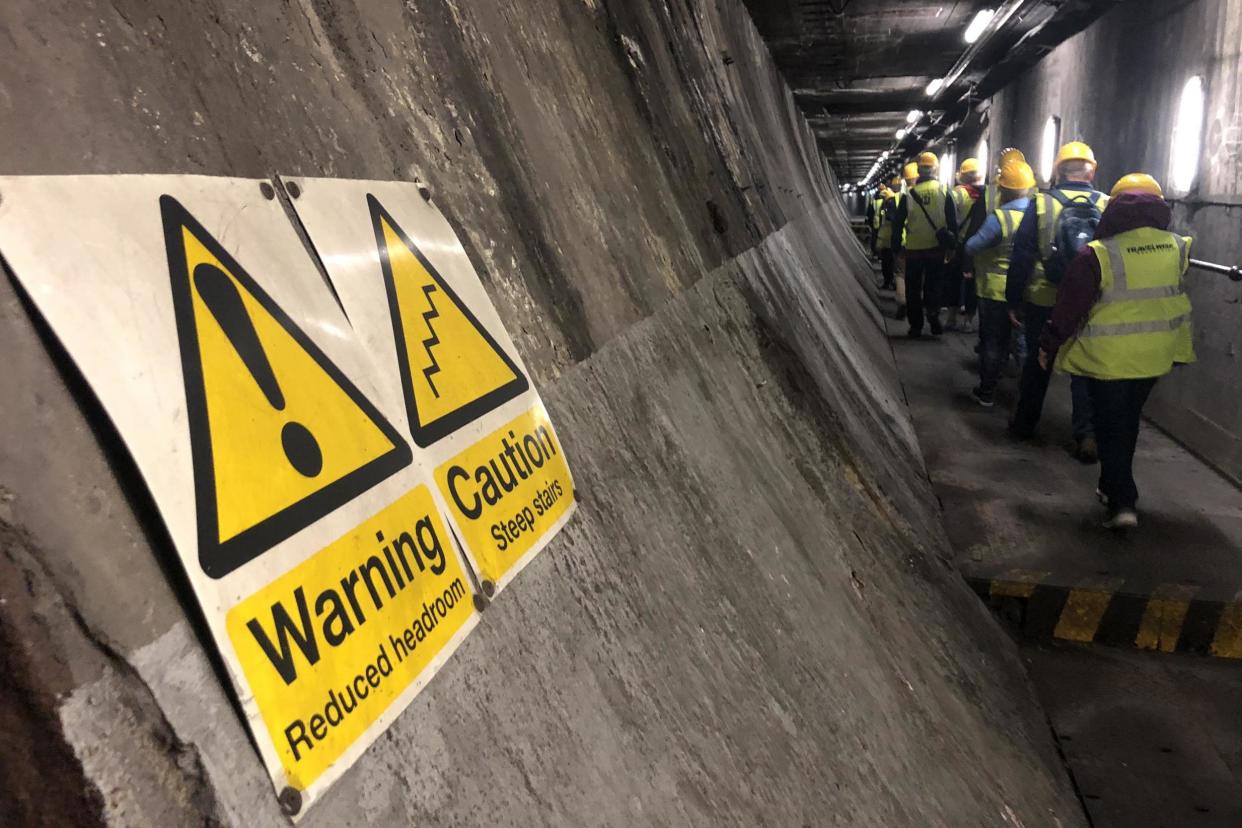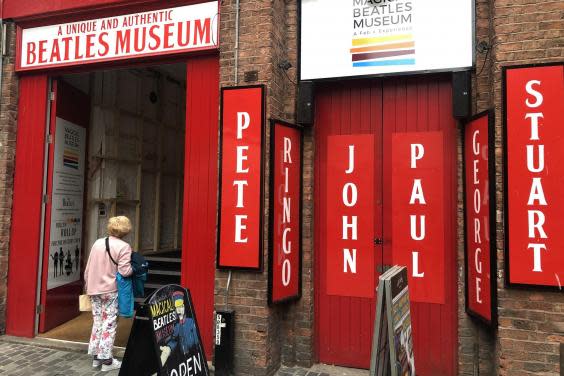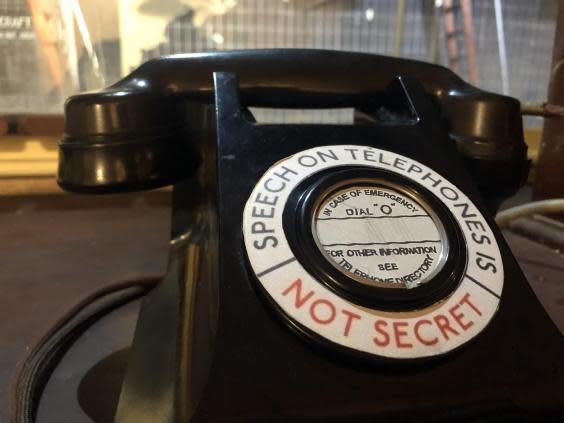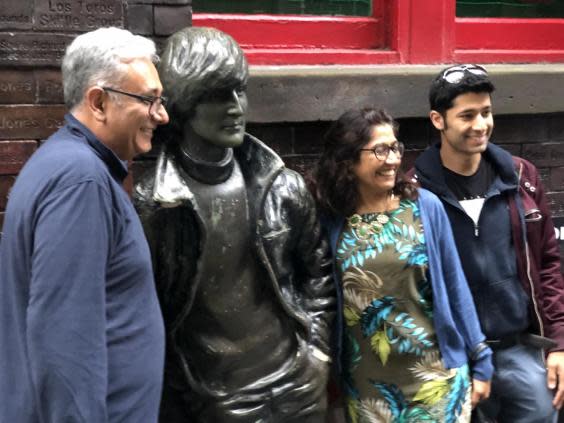Going underground: A subterranean exploration of Liverpool

Our travel correspondent is making the most of the UK in August by taking on a challenge a day. Today: under the surface of Liverpool.
International Beatles Week is under way in Liverpool. In the heart of the city, Mathew Street has embraced the aura of John, Paul, George and Ringo enthusiastically and profitably. The narrow street is thronged with fans of the fab six (one museum pedantically includes the original drummer Pete Best and late bassist Stu Sutcliffe in the mix).
On Thursday the first chords of the overseas tribute bands began at 11am with The Indonesian BeatClub taking to the stage in the cellar at the Cavern Club. The Beatles cut their musical teeth in the basement of a warehouse on this site. While the superstructure has, like the supergroup, long since disappeared, the Cavern itself was filled in but then rescued and revived.
From the probably obstructed point of view of an objective member of the audience, this is now arguably the worst venue in the city. Fortunately, a visitor to Merseyside seeking excitement or enlightenment below the surface will find plenty more rewarding subterranean options: Liverpool has the most distinctive range of underground tourist attractions of any city in the UK, and possibly the world. Combine the best in one adventurous day of delving through the past, deeply.
Through the morning, damply, waves of rain and squalls washed in from the Irish Sea: a good day for subsurface exploration. Begin at the spot from which the city blossomed on the world stage: in the Liverpool One shopping centre, specifically outside John Lewis.

You may well find shoppers clustered around a window set in the pavement and protected with a guard rail. They are peering into the past. As the site was cleared for construction of the retail complex, the archaeologists were allowed to rummage. They peeled back the layers of civilisation to discover that the city’s original closed wet dock was in remarkably good shape. Much of it was buried under sand, with the intention of preserving the Old Dock, as it is now known.
By the standards of 1715, the concept was revolutionary. Thomas Steers, a Dutch engineer, used canal techniques from the Netherlands to created a dock that was vast and controllable.
The location: the original pool that gave Liverpool its name. It was a tidal inlet that proved invaluable for the rudimentary shipping industry. Steers identified it as the best place for an innovative new design.
Crucially, the dock was protected from the tides that made unloading ships a long and laborious affair. Ships could float in at high tide and tie up. Then the gates were closed, allowing cargo to be handled in a day and a half rather than a week and a half.
This single piece of infrastructure changed the world. The giant leap in efficiency that the dock generated was rewarded many times over, and much copied in the city and across the globe.

Liverpool’s trading supremacy led ultimately, says my guide Dan, to it becoming the second city of the British Empire, the crucible of The Beatles and home to two outstanding football teams: Liverpool and Liverpool Reserves (Everton fans tell a similar story).
Even though only a corner of the Old Dock remains visible, it is a vital piece of industrial archaeology. Guided tours run three days a week.
Next: an industrialist who created an astonishing subterranean folly. One mile east of the centre, Smithdown Lane conceals a strange underground world. It was created in the early 19th century by a tobacco baron, Joseph Williamson.
He had a sideline as a property magnate, and was developing the Edge Hill area, then a long way from the city. He wanted to provide employment for the masses who had moved to Liverpool. So he set men to work building a network of well designed and dressed tunnels.
Some of the structures had a degree of purpose: they provided foundations for housing Williamson was building. But most comprised a job-creation scheme.
As with the Cavern Club, the Williamson Tunnels were rescued from oblivion. But unlike the Beatles’ venue, the premises include a secondhand shop and a cafe dispensing excellent tea at £1 a mug.
Read more
Liverpool hotels: 10 of the best places to stay
Many of the workers Williamson employed were Irish, and mostly Catholic. For centuries, Liverpool lacked a Catholic cathedral. In the 1930s, building commenced on a structure that was intended to become the biggest cathedral in the world.
Edwin Lutyens dreamed of creating a dome bigger than St Peter’s in Rome. First, though, he had to build the giant crypt that would become the foundation for his spiritual superlative.
The crypt happened, the cathedral did not – at least in its present form. War interrupted the project. By the time it was over, a new social order and economic reality permeated the city and its Catholic community.
The Metropolitan Cathedral of Christ the King was revolutionary in its circular form and soaring buttresses, and was swiftly nicknamed “Paddy’s Wigwam”. But the crypt that was intended as the foundation for a very different building remains echoing with spirituality and ambition as Lutyens intended.
Down the steps from the cathedral is the closest Liverpool gets to cavern dining: an industrial-chic restaurant known as the Pen Factory (guess what it used to be).
I ordered the tomato and chilli soup followed by sea bass with stir-fried noodles, with tea served in earthenware mug (no, I didn’t specify the earthenware in the manner of spoiled rock star, it just happened). While I waited for the feast, I almost ran out of hyphens while summing up the place as a semi-subterranean, Bilbo-Baggins-goes-hipster bar-restaurant.
Liverpool’s often awkward architecture is largely a result of the Second World War, when it was battered by the Luftwaffe as the main hub for shipping across the Atlantic. At first, British vessels – civilian as well as military – proved extremely vulnerable to German U-boats. Within hours of war being declared on 3 September 1939, the SS Athenia was sunk with the loss of 117 lives in the first strike of the submarine-based Kriegsmarine – sea war.
The Western Approaches – a notional sea area extending from Shetland and Scilly to well beyond Ireland – had a command centre set up in the basement of Derby House in Liverpool. It boasted a seven-foot reinforced roof, sleeping quarters and a large and theatrical map room. Staff, mainly women, worked mathematical miracles to plot the course of U-boats and minimise the horrific loss of life that a single torpedo could perpetrate.

Today, the premises have been opened up – with the shrewd principle that it should appear the occupants have just stepped away from their posts for a cup of tea. Deep below the Blitzed streets of Liverpool, a high-pressure, high-stakes game of cat-and-mouse was in play for years.
Elsewhere in Liverpool during the war, the Queensway Tunnel was in use by the military – as sepia photographs of planes emerging from the cross-Mersey thoroughfare confirm.
You learn this on the splendid Merseytravel tunnel tour. Guides Ryan and Phil put on a double act to lead tourists through the Art Deco innards of “a big chimney in the middle of a city”.
Visitors are led from the design aspirations to the 21st-century reality, stepping out through a door to witness the unstoppable tides of vehicles threading through the Queensway Tunnel, a 1934 masterpiece connecting the city with Birkenhead, across on the Wirral. The tour is a spectacular two-hour journey deep into the city’s plumbing.

Back at the Cavern Club, I chose not to stay on for the top of the bill act at 1am. All the way from Guatemala, ladies and gentlemen: The Teafeatles.
Time for bed. Liverpool even does subterranean accommodation, as I can testify when I was given a basement room at 30 James Street, the former home of the White Star line. What with some overthought cushioning on the doors, it felt like I imagine a padded cell to be. But the heavenly rooftop bar makes up for it.
For all its subterranean attractions, Liverpool remains the most human of cities.
Tomorrow: is it possible to cycle from the Irish Sea to the North Sea in a single day ... on a folding bike?



